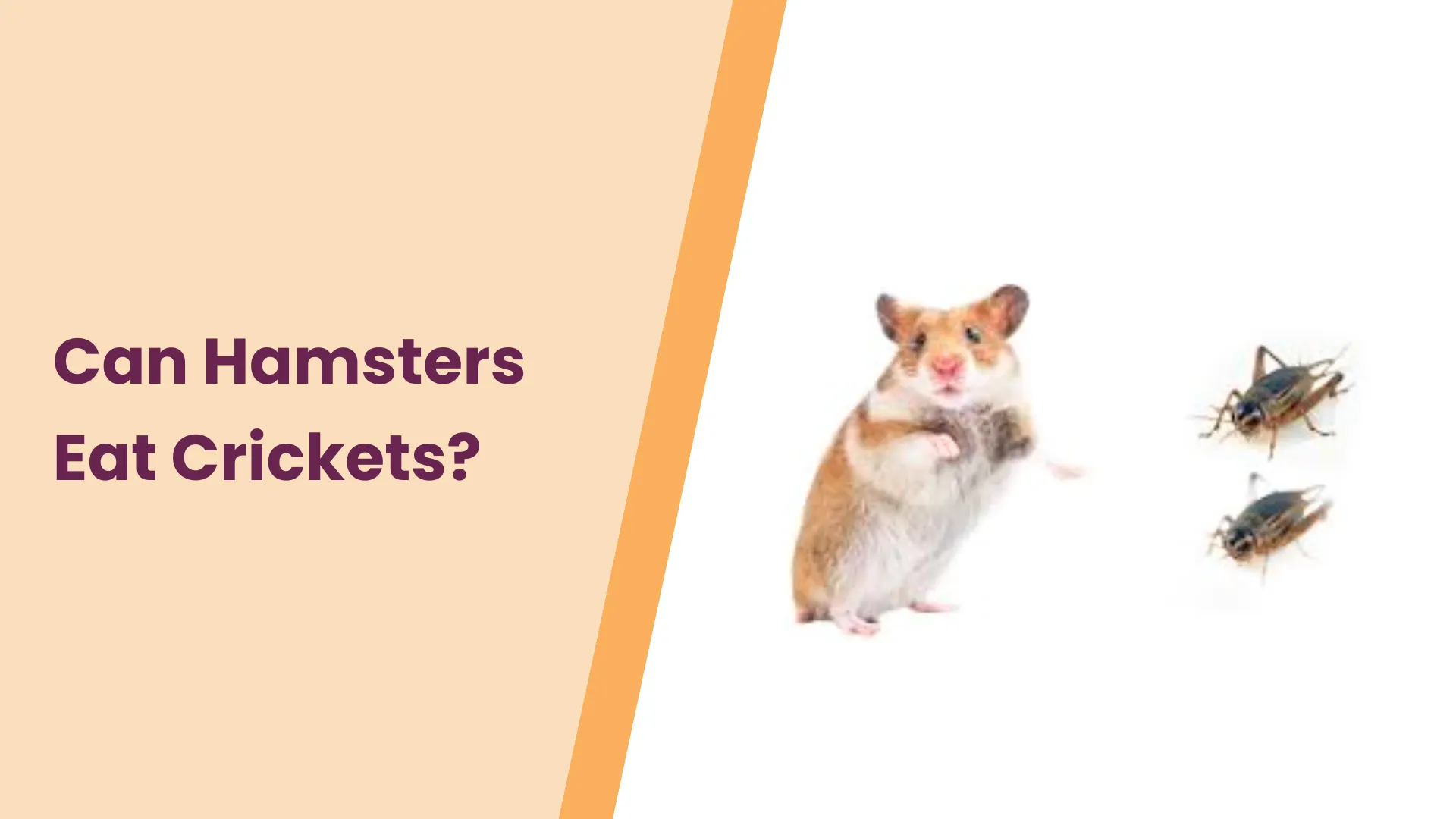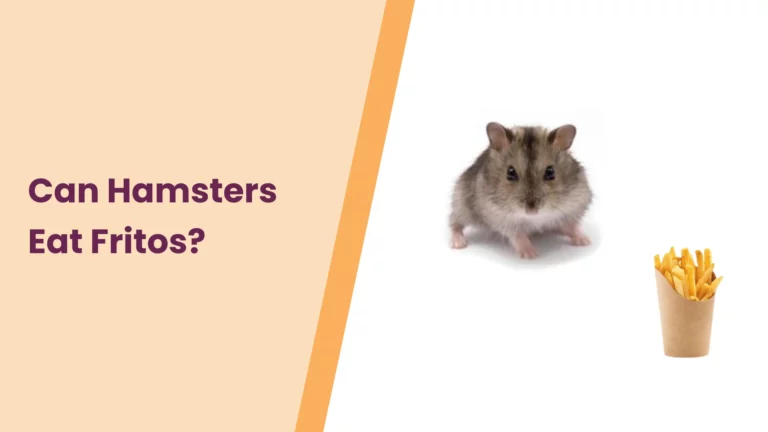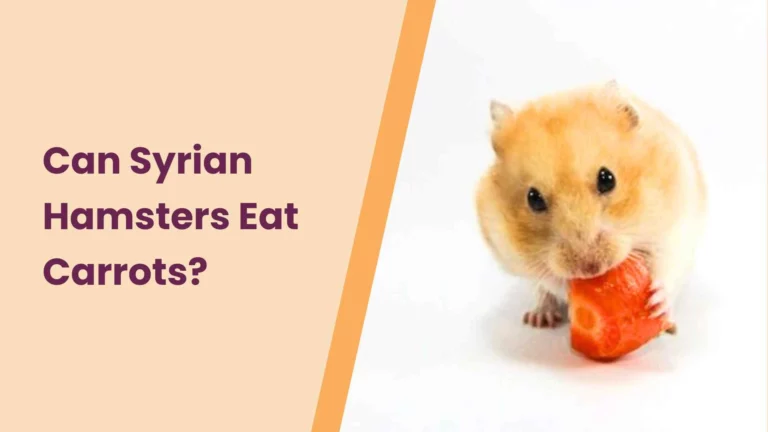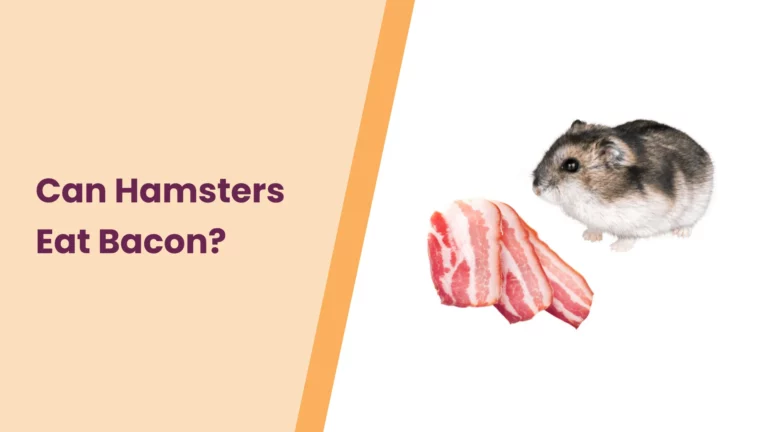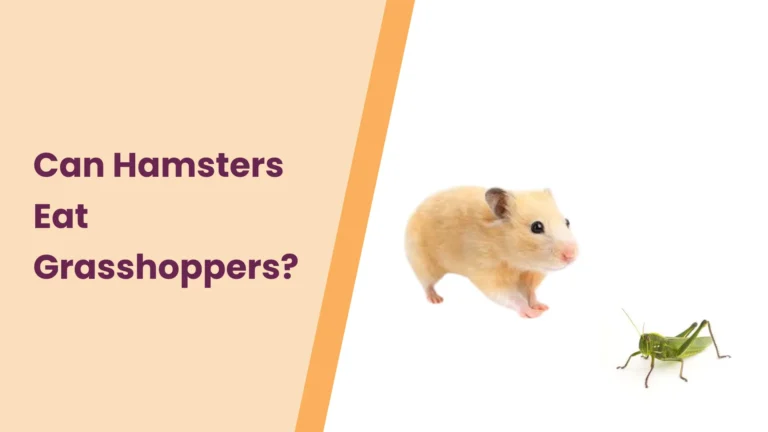Can Hamsters Eat Crickets? – All You Need To Know
Welcome to the flavorful world of hamster care, where every nibble and munch counts in ensuring the happiness and health of your tiny, furry friend. If you’re on a quest to enrich your hamster’s diet, the question of whether these pocket-sized pals can indulge in the crispy delights of crickets might have crossed your mind. Fear not, curious hamster enthusiasts, as we embark on a crunchy exploration into the realm of “Can Hamsters Eat Crickets?”
Join us on this adventure as we uncover the nutritional benefits, potential risks, and the art of introducing these chirpy treats into your hamster’s menu. After all, every squeak and hop deserves a delectable twist! Let’s dive into the world of hamster gastronomy together.
Can Hamsters Eat Crickets? – Nutritional Benefits of Crickets for Hamsters
As devoted hamster guardians, we’re always on the lookout for ways to enhance our fluffy companions’ well-being. Enter the humble cricket – a crunchy delight that packs a powerful nutritional punch for our tiny friends. These tiny insects are a fantastic source of high-quality protein, essential for muscle development and overall vitality in hamsters.
So circling back to the question, Can Hamsters Eat Crickets? – Well, the answer is yes. Infact, in the wild, hamsters often feed on crickets.
Packed with vitamins such as B12, crickets contribute to a robust immune system, ensuring your hamster is ready to face the world with energy and vigor.
But that’s not all; crickets also deliver a bounty of minerals, including zinc and iron, crucial for maintaining healthy bones and preventing anemia. This natural, protein-rich snack serves as a delightful supplement to your hamster’s regular diet, potentially enriching their lives with a diverse range of nutrients.
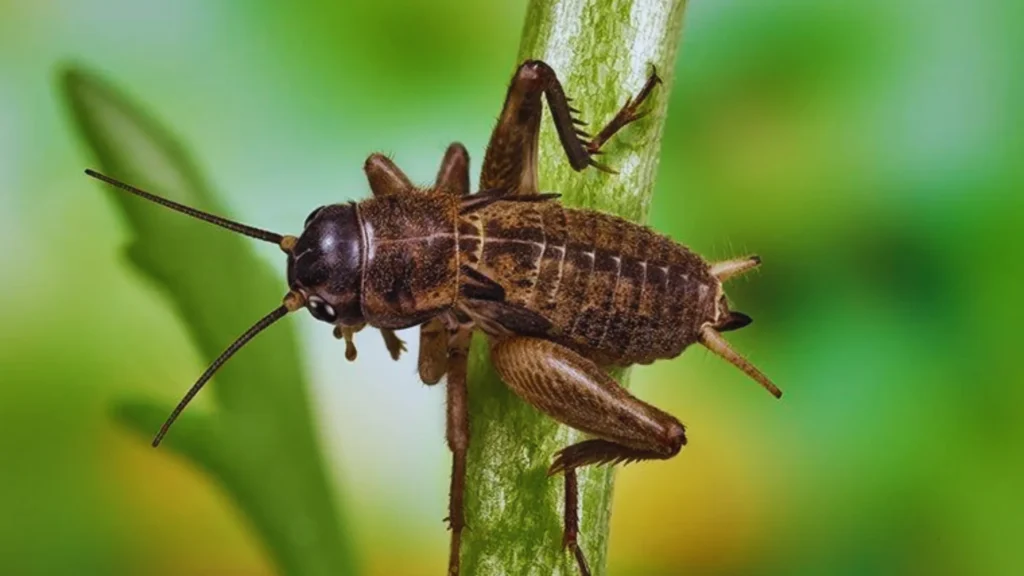
As you navigate the intricacies of hamster nutrition, consider incorporating crickets as a tasty treat, offering your furry friend not just a delightful crunch but a wholesome boost of essential elements. To delve deeper into the world of hamster gastronomy, let’s explore the risks and considerations associated with introducing crickets into their diet.
Risks and Considerations
While the prospect of treating your hamster to a cricket feast is exciting, it’s essential to tread carefully through the meadows of novelty. As responsible hamster caretakers, it’s our duty to be aware of potential risks and considerations associated with introducing crickets into their diet.
Firstly, allergies can be a concern. Just like us, hamsters may have sensitivities to certain foods, and crickets are no exception. Keep a keen eye on your hamster’s reactions when offering crickets for the first time, watching for any signs of discomfort or adverse effects.
Choking hazards also warrant attention. Crickets, with their crisp exoskeletons, may pose a risk if not consumed cautiously. Ensure that the crickets are appropriately sized for your hamster, reducing the possibility of choking incidents.
Another crucial consideration is the potential for pesticide exposure. If the crickets have been treated with pesticides, they could transfer these chemicals to your hamster upon consumption. Opt for organic or pesticide-free options, ensuring a safer dining experience for your pint-sized companion.
As with any dietary change, moderation is key. While crickets offer nutritional benefits, an excess of treats can upset the delicate balance of your hamster’s diet. Strike a balance between variety and moderation to keep your hamster’s nutritional needs in check.
Navigating the culinary landscape for your hamster is an art, and understanding the risks involved is the first step in creating a safe and enjoyable dining experience. Now, let’s delve into the recommended portion sizes, ensuring a harmonious balance between treat time and nutritional well-being.
Recommended Portion Sizes
In the delicate dance of hamster nutrition, finding the perfect balance is an art form. When it comes to introducing crickets into your hamster’s menu, precision in portion sizes becomes paramount. These miniature marvels should be treated as a delightful supplement rather than the main course.
Start small and observe. A couple of crickets, appropriately sized for your hamster, can be a perfect introduction. Monitor your hamster’s reaction, ensuring they savor the experience without overwhelming their tiny tummies.
Consider your hamster’s overall diet when determining portion sizes. If your furry friend already enjoys a varied and balanced menu, the addition of crickets should complement, not dominate, their daily intake. As a rule of thumb, treats, including crickets, should make up no more than 10% of your hamster’s diet.
Timing is key. Introduce crickets as a sporadic treat rather than a daily indulgence. This ensures that the joy of crunching on these tiny delicacies remains a special occasion, preventing dietary imbalances and maintaining the nutritional harmony your hamster deserves.
Remember, moderation is the melody that guides the rhythm of your hamster’s culinary symphony. Now that we’ve uncovered the nuances of portion sizes, let’s explore the art of introducing crickets into your hamster’s diet seamlessly.
How to Introduce Crickets into a Hamster’s Diet
Embarking on the culinary adventure of introducing crickets to your hamster’s diet is a journey that requires patience, observation, and a sprinkle of creativity. Here’s your guide to seamlessly incorporating these chirpy delights into your hamster’s menu.
Start Slow and Gradual
Begin by offering a small number of crickets to your hamster. This slow introduction allows your furry friend to acclimate to the new taste and texture without overwhelming their senses. Observe their response closely, looking for signs of excitement or any potential discomfort.
Mix and Match
Blend crickets with your hamster’s existing food. This can be achieved by adding a few crushed crickets to their regular pellets or mixing them with fresh veggies. The familiar scents and flavors will make the transition smoother, enticing your hamster to explore this novel addition.
Monitor Behavior
Keep a watchful eye on your hamster’s behavior after introducing crickets. Look for signs of enjoyment, such as enthusiastic nibbling, and ensure there are no adverse reactions. If your hamster displays any signs of distress, consult with a veterinarian to address potential concerns promptly.
Variety is the Spice of Life
Rotate treats to maintain your hamster’s interest and provide a diverse array of nutrients. Crickets can be part of a rotating selection of treats, ensuring that each nibble brings a unique and delightful experience.
Adjust According to Preferences
Every hamster has its own preferences. If your hamster takes a particular liking to crickets, you can adjust the portion sizes accordingly. On the other hand, if they show less enthusiasm, consider other treat options to keep their diet exciting and well-balanced.
By infusing creativity and mindfulness into the introduction of crickets, you’re not just expanding your hamster’s culinary horizons but also fostering a positive and enjoyable dining experience. Now, let’s explore alternatives to crickets for hamster protein, providing you with a palette of options to delight your tiny companion.
Alternatives to Crickets for Hamster Protein
While crickets bring a symphony of flavors to your hamster’s dining experience, the world of protein-rich treats is vast and varied. Consider these alternatives to crickets to cater to your hamster’s discerning palate and nutritional needs.
Mealworms
Tiny but mighty, mealworms are a popular choice for hamster treats. Packed with protein, they offer a crunchy texture that hamsters often find irresistible. Like crickets, mealworms can be introduced gradually, and portion sizes should align with your hamster’s overall diet plan.
Eggs
A kitchen staple can become a protein powerhouse for your hamster. Offer a small amount of cooked egg (boiled or scrambled) as an occasional treat. Ensure it’s plain, without any seasonings, and watch your hamster relish the protein-packed goodness. Also, hamsters can eat egg-shells too.
Seeds and Nuts
Sunflower seeds, pumpkin seeds, and unsalted nuts are not only rich in protein but also provide essential fats and nutrients. Moderation is key, as these treats are calorie-dense. Offer them as a delightful addition to your hamster’s menu.
Plain Tofu
For our vegetarian hamster friends, plain tofu can be a fantastic protein source. Cube it into small, hamster-sized portions and watch your little one explore this unique and protein-rich treat.
Dried Insects
Explore a variety of dried insects like mealworms, grasshoppers, or silkworm pupae. These treats maintain the crunch factor while offering a diverse range of nutrients. As always, introduce them gradually and in moderation.
Cheese
Incorporate small amounts of plain, unsalted cheese into your hamster’s diet for a protein boost. Ensure it’s free from additives or seasonings, and observe your hamster’s response to this cheesy delight.
Remember, the key is to provide a balanced and varied diet for your hamster. Rotate these protein-rich treats to keep things exciting and to meet different nutritional needs. As we navigate the protein-packed world of hamster treats, let’s now shift our focus to monitoring your hamster’s health, ensuring they thrive on their diverse and nutritious menu.
Monitoring Your Hamster’s Health
As devoted hamster enthusiasts, our joy lies not just in providing delightful treats but also in ensuring our tiny companions lead healthy and happy lives. Here’s how you can actively monitor your hamster’s well-being as you introduce new elements into their diet.
Regular Veterinary Check-ups
Schedule routine visits to your veterinarian to keep tabs on your hamster’s overall health. A thorough check-up allows for early detection of any potential issues, ensuring prompt intervention if needed. Your vet can also offer tailored advice based on your hamster’s specific needs.
Observe Eating Habits
Pay close attention to your hamster’s eating habits, especially when introducing new treats like crickets or alternative protein sources. Look for changes in appetite, signs of discomfort, or any unusual behavior during mealtime. Consistent and healthy eating habits are indicative of your hamster’s contentment.
Weight Management
Maintain a balance between treats and your hamster’s regular diet to prevent weight-related issues. A sudden or significant change in weight could signal an underlying health concern. Use a gentle touch to monitor weight fluctuations, ensuring your hamster stays within a healthy range.
Dental Health
The act of chewing on treats like crickets or seeds can contribute to dental health. However, it’s essential to be vigilant for any signs of dental problems, such as difficulty eating, drooling, or changes in chewing behavior. Regular dental check-ups and providing appropriate chew toys can help keep your hamster’s teeth in top condition.
Fur and Skin Condition
A glossy coat and healthy skin are indicators of a happy hamster. Watch for any changes in fur quality, such as fur loss, dullness, or skin irritations. These could be signs of underlying health issues or reactions to new foods.
Behavioral Cues
Your hamster’s behavior can provide valuable insights into their well-being. A content and healthy hamster will be active, curious, and display a playful demeanor. Any sudden changes, lethargy, or signs of distress should be addressed promptly.
By actively monitoring your hamster’s health, you become a vigilant guardian of their well-being. Remember, every squeak, hop, and nibble is a communication from your tiny friend, and by tuning into these cues, you ensure a lifetime of joy and companionship. As we conclude our exploration of hamster health, feel free to share your experiences and questions in the comments below, creating a community of caring hamster enthusiasts.
Conclusion
In the whimsical world of hamster care, where every nibble and snuggle creates a symphony of joy, we’ve unraveled the mysteries of introducing crickets and other delightful treats to our pint-sized companions. Balancing nutrition, variety, and careful observation, we’ve embarked on a journey to enhance the well-being of our furry friends.
As you explore the possibilities of enriching your hamster’s diet, remember that each tiny crunch contributes to their happiness. Whether it’s the protein-packed joy of crickets, the playful nibble of mealworms, or the occasional cheesy delight, your hamster’s dining experience should be a delightful melody.
Join our community of caring hamster enthusiasts by sharing your experiences and questions below. Let’s continue this adventure together, ensuring our tiny friends live their best, healthiest lives filled with love, treats, and the joy only a hamster can bring.
“Your hamster tales, questions, and experiences are the heartbeats of our community. We invite you to share your thoughts, tips, and even the adorable quirks of your furry companions in the comments below.
Let’s create a space where hamster enthusiasts unite, learn from each other, and celebrate the joy these tiny creatures bring into our lives. Feel free to spread the love by sharing this article on your favorite platforms, allowing others to join our hamster-loving community.
Together, we can build a resourceful hub for all things hamster care, where every shared insight becomes a stepping stone toward ensuring the happiest and healthiest lives for our beloved pocket-sized friends. Join us in this journey of fluff, fun, and shared wisdom!” – HamsterPit.

